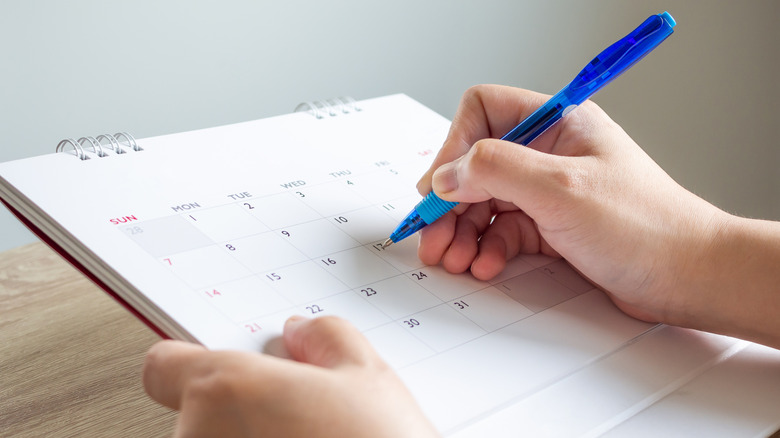If You Can Lower Your Cholesterol Faster Than This Number, You're In The Minority
Managing your cholesterol levels makes sense even if they're only slightly elevated, since high cholesterol can put you at risk of cardiovascular problems like heart disease and stroke. This means you should aim for your total cholesterol level to be under 200 milligrams per deciliter (mg/dL). However, the distribution of that 200 mg/dL matters. (Read about some myths you should stop believing about cholesterol.)
Current guidelines recommend that your low-density lipoprotein (LDL) number (your "bad" cholesterol) fall below 100 mg/dL, and your high-density lipoprotein (HDL) number (the "good" kind) be greater than 60 mg/dL. Consequently, you'll want to start making changes aimed at decreasing your LDL cholesterol and raising your HDL cholesterol if you don't meet those suggestions. But there's an important caveat: Even if you completely overhaul your lifestyle, your cholesterol won't suddenly reflect your healthy decisions. More likely, the change you see will be gradual, albeit steady, if you're dedicated to pursuing the best ways to lower your cholesterol without medications.
Under normal circumstances, you can expect to see a shift in your cholesterol numbers within one to two months after making dietary or lifestyle changes, but it can sometimes take several months longer. To be sure, if you take cholesterol-lowering drugs at the same time, you might see your cholesterol plummet faster. However, you can't expect any dramatic movement; you need to accept that you'll be in the minority if you decrease your cholesterol before you reach the six- to 12-week mark.
Why you can't speed up cholesterol reduction
Every person's health history is unique. That means your background plays a part in determining how rapidly you may be able to get your cholesterol under control.
Take your age, for instance. The closer you get to 45, the greater the chance that you'll experience high cholesterol — and the harder it may be for you to maintain healthier cholesterol numbers. The same holds if you have a genetic predisposition toward high cholesterol, which is a condition called familial hypercholesterolemia. Unsure if you're a carrier for familial hypercholesterolemia? Dr. Seth Martin recommends getting tested if close relatives have had heart attacks by their mid-50s (men) or mid-60s (women), per Johns Hopkins Medicine.
This doesn't mean that you can't move the needle faster on your cholesterol by switching up your lifestyle. You can; you just need to be patient. For example, you could add more cardioprotective foods into your diet, quit smoking, work out moderately for at least 150 minutes a week, or, if applicable, lose weight. These are all activities that will probably nudge your cholesterol slowly but steadily.
Hard work can pay off
What if your cholesterol still remains resistant to decreasing after a couple of months of consistent interventions? At that point, you and your doctor may want to determine if popular cholesterol-lowering drugs like statins, niacin, fibrates, bile acid sequestrants, or PCSK9 inhibitors could be right for you. (Just be sure to educate yourself about the unexpected side effects of cholesterol medications.)
Is it hard to wait for your cholesterol levels to fall within your target range? It can be — but it's not necessarily a sign of failure if the process is taking longer than you'd like. At the end of the day, it's essential to focus on the elements that are within your control.
And if you're someone who tends to give up early, remind yourself that small changes today can have big payouts tomorrow. Simply adjusting your eating patterns could send your cholesterol downward. For instance, limiting your intake of saturated fats to under 7% of your calories can bring down your LDL cholesterol by up to 10% (via the National Institutes of Health). Similarly, increasing your daily fiber consumption by between 5 and 10 grams can reduce your LDL levels by up to 5%.



